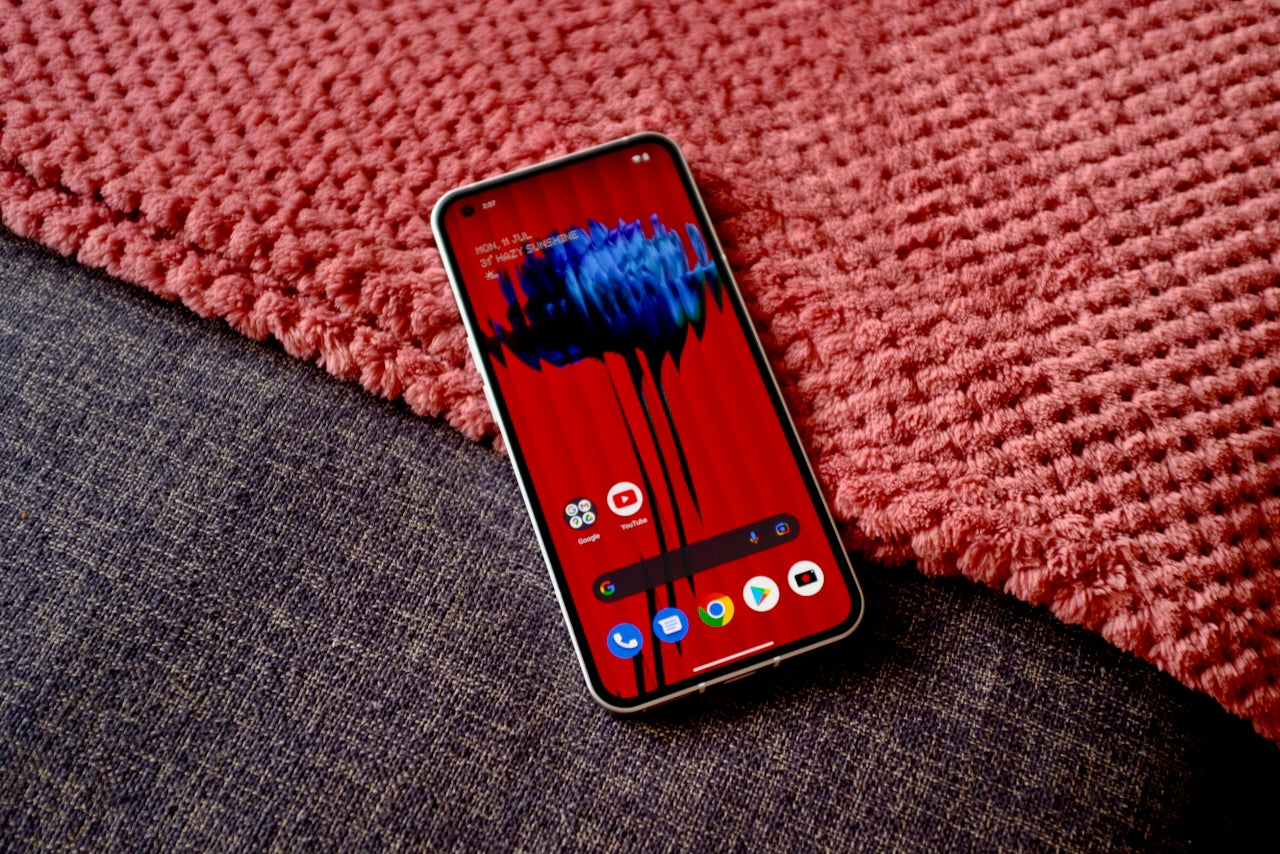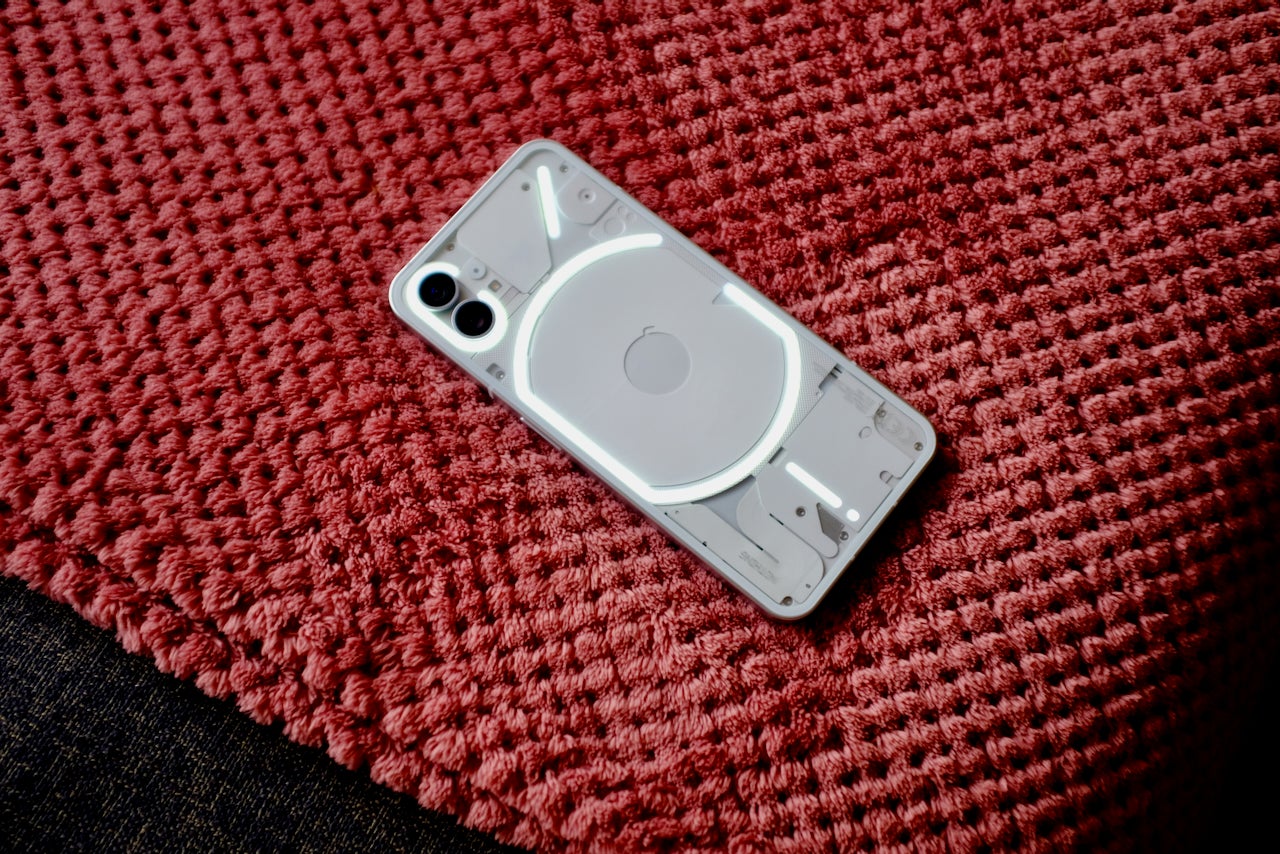Nothing Phone (1) vs iPhone 13: Spec comparison
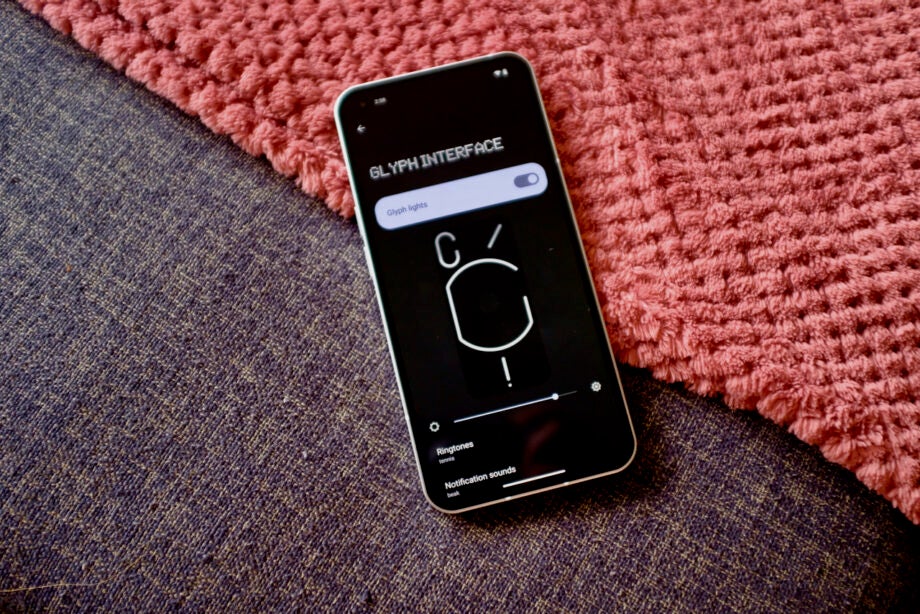
The Nothing Phone (1) has just launched, but how does it stack up when compared against Apple’s main handset?
Nothing has just launched its first smartphone, the Phone (1). Its launch has been accompanied by a wave of excitement, but is the product good enough to knock the best of the best off the top spot? In this article we take a look at how it compares to the iPhone 13, based on our full review of that product and our early impressions of the Nothing Phone (1) along with its list of specifications.
Design
The Nothing Phone (1) prides itself on its unique design, which looks significantly different from the competition in one key respect and that’s its system of LED lights. These flash depending on the task that the phone is undertaking, so when it’s charging there is a bar that lights up to show the completion percentage and when there’s an incoming call it can show a specific pattern to alert you to who is calling.
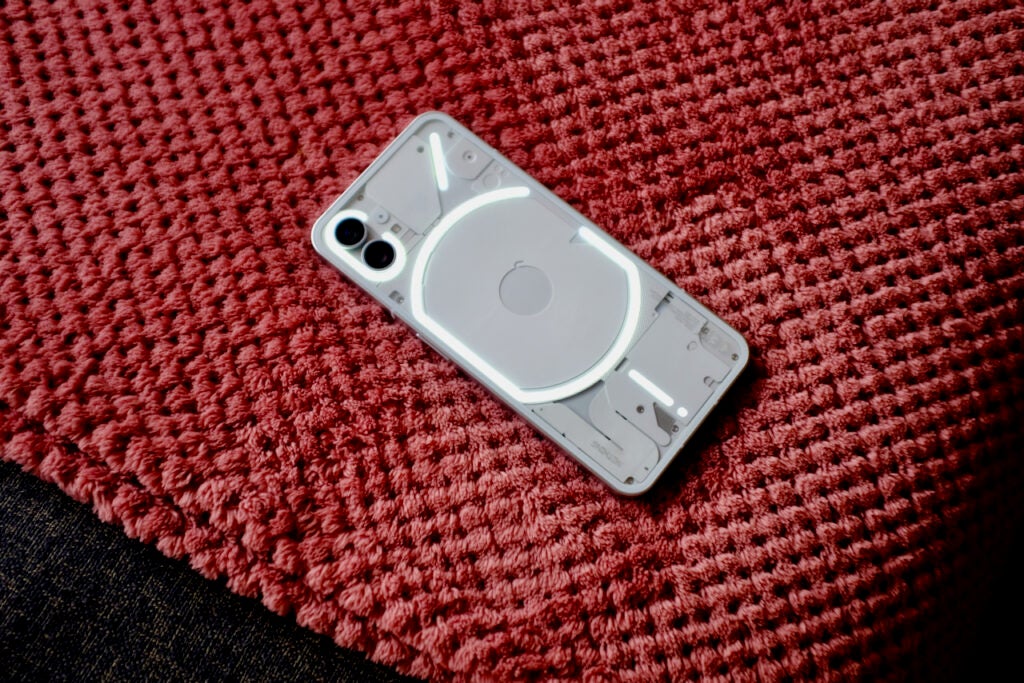
Despite this USP, it does actually somewhat resemble the iPhone 13’s general design. Both have flat sides, rounded corners, and a dual camera module on the back. However, Apple’s effort has an IP68 rating against water and dust ingress, compared to IP53 for the Phone (1).
Screen
The Nothing Phone (1)’s OLED screen measures 6.55-inches and has a 1080p resolution. It’s also got HDR10+ support and 10-bit colour depth to add some extra kick for when you’re watching supported content. On top of that, it runs an adaptive 60-120Hz refresh rate for added smoothness when you need it. We’ve not had enough time watching films or playing games on this screen to really give you the full appraisal, but from the specs is certainly seems promising for the price.
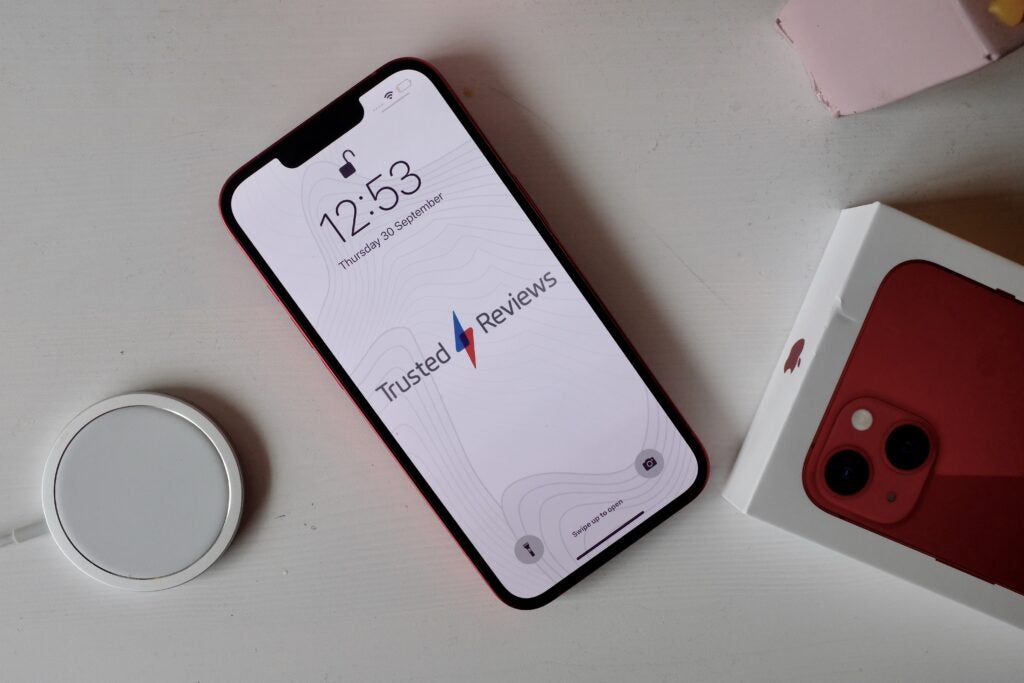
The iPhone 13’s OLED screen is unfortunately interrupted by a large notch at the top, and its refresh rate is stuck at just the standard 60Hz, but otherwise there’s a lot going for it. We praised the display by saying that “colours are vibrant and immersive, without feeling lurid”, and that’s due in part to its HDR10 support.
Camera
The Nothing Phone (1) and the iPhone 13 both have two rear sensors, and they’re both wide and ultrawide. However, for one thing the resolutions differ, with the Phone (1)’s snapper being 50-megapixel apiece and the iPhone 13’s being 12-megapixels, and we expect that performance will likely differ as well, though we’ve not yet tried out the Nothing Phone (1)’s cameras to determine that.

While we can’t pass judgement on the newer handset, we have to say that we were highly impressed with the iPhone 13’s photographic abilities. Night shooting in particular was drastically improved with this generation, as you can see in the above image, but day shooting remained excellent too, delivering pleasingly natural colour shades:

We’re looking forward to testing out the Nothing Phone (1) and seeing whether it can match that performance.
Performance
The Nothing Phone (1) runs on a Snapdragon 778G+ processor which finds itself on the upper-mid-range part of the smartphone chipset spectrum, not being on the same flagship level as the Snapdragon 8 Gen 1 or the even newer Snapdragon 8 Plus Gen 1. We expect generally good performance, but it’s unlikely to hit the heights of Android flagships like the OnePlus 10 Pro, Xiaomi 12 Pro, or Oppo Find X5 Pro.
On the other hand, the iPhone 13 brooks no quarter when it comes to performance. Running on the A15 Bionic, the best mobile chipset around, it blows away the competition and moreover this is brought to bear with excellent post-processing, snappy animations, and muscular mobile gaming.
Battery
The Nothing Phone (1) has got a 4500mAh battery on board, but we’ve not tested this against the clock yet so we can’t be exactly sure of how fast it will drain. Once it’s gone through the tests, we’ll update this page with our results. This cell is supported by 33W wired fast-charging, and Nothing claims that this will get topped up from 0-50% in just half an hour. It also has wireless charging too, which is far from guaranteed at that price point.
The iPhone 13 highly impressed us with its battery life, greatly improving upon the record of its predecessor. Our reviewer Max Parker stated: “I’m not going to say this is the best battery life I have seen on a phone, but it’s certainly far better than the battery life I experienced with the iPhone 12.” However, its fast-charging prowess is capped at 20W, though it does also support wireless charging.
Price
The Nothing Phone (1) has arrived with a firmly mid-range price tag: £399. For the specifications you get, an enumerated above, that seems like a fair price, although we’ll have to see whether it gets the most out of these parts to deliver a successful whole once our full review is complete.
The iPhone 13 is significantly more expensive, costing £779 for the base model, but we recommended that Apple fans should buy it if they’ve gone a few years without an upgrade, since it packed several key improvements over the devices from previous years.
Early impressions
We’ve not put the Nothing Phone (1) through our whole testing procedure just yet, but there are some ways that it has already impressed us, including with its noteworthy LED design and its speedy fast-charging. However, in order to determine how it compares to the iPhone 13 we will need to pay particular attention to its performance, battery life, and camera ability, since these are three key areas that many consumers will prioritise when choosing their new handset.


